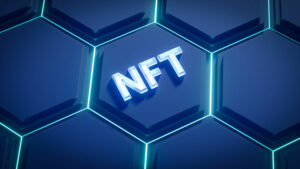
Whether it’s on the DeSo, STEEM, or HIVE blockchains, Web3 social networking platforms are quietly exploding.
The political-healthcare climate of the last couple of years has divided people as never before, increasing the demand for free speech and non-centrally controlled platforms. But that’s just the tip of the iceberg.
The truth is Web3 platforms have their own ecosystems, utilizing cryptocurrency to reward users for certain actions, in some cases, letting them create their own NFTs to sell as digital tokens. As you may know, crypto and NFTs are huge buzzwords right now.
So, are Web3 platforms worth adding to your marketing mix?
Do You Have The Bandwidth?
Just as it’s necessary to create a strategy for platforms like LinkedIn or YouTube, you must be able to develop a strategy for Web3 platforms to be effective.
It doesn’t matter whether it’s Steemit (Medium alternative), Odysee (YouTube alternative), Rumble (another YouTube alternative), or otherwise. If you want to do well on any new platform, you must be willing to study its history and esthetic, learn best practices, and deliver content that’s matched to the platform.
To an extent, you can take the content you already have and move it over to another platform (especially on video sharing sites), but that still requires resources, and without a clear understanding of the average user on the platform, merely placing your content in another context may not do much for your marketing.
Bottom line – do you have the resources and time to dedicate to another platform, and if so, how many? Half an hour here, 25 minutes there adds up much quicker than you might think, and if you’re maintaining a presence on multiple channels already, you know well the time and energy required.
As much as omnichannel marketing is the default these days, trying to keep up with every platform, at the rate they’re popping up, is going to prove challenging at best.
Does it Fit with Your Brand?
It may not make sense for certain brands and companies to create a presence on Web3 platforms, especially those who’ve taken an aggressive stance and bias towards the mainstream narrative in the last few years. For instance, Facebook building a presence on Rumble would seem incongruent, and even backwards.
Again, this isn’t to say that all Web3 platforms are dedicated exclusively to free speech and oddball conspiratorial discussion. Whether it’s D.Tube or HIVE.blog, the platforms generally aren’t as weird as they might sound!
But if your company isn’t perceived well by the demographic utilizing said platforms, there would be virtually no benefit in trying to reach an audience that fundamentally holds different values than you do. Ideally, you would have values that match up with the user base, or at least have a neutral stance that lets you interact in a meaningful way.
Conclusion
At the end of the day, we must all accept that we’re headed into the age of Web3. Even Facebook, Instagram, and Twitter have new blockchain developments they’ve already deployed, or are in the process of developing.
These may not be Web3 by the strictest of definitions (none of the major social networks are decentralized), but it’s clear that they will be incorporating cryptocurrencies, NFTs, and other functionalities into their technologies.
Ready or not, the time to begin studying up on Web3 is now.
